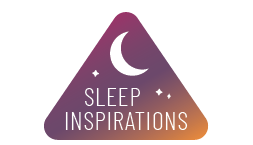
Insomnia – A Qualitative and Quantitative Analysis
Winston
Yes, that is what I said; “A problem with insomnia needs to be analyzed qualitatively.”
During my college years, I majored in the study of chemistry. The study requirements included courses in qualitative and quantitative analysis. Essentially, the study of what a substance is made of and how much of each component part is included. My comment on analyzing insomnia qualitatively means that a physician should know the components of the complaint.
The term, insomnia, has a multitude of meanings in common use as well as in medicine. The physician needs to know what the person using the term is experiencing. In essence, what are the specific issues involved? It is only with this type of clarity that the patient’s situation can be assessed. The analysis includes the effects on daytime activities and is designed for nocturnal sleepers. Those whose primary sleeping time is during the day, for example shift workers, require a different approach.
Difficulty falling asleep or initiating sleep is the most recognized problem described by the term. Defining the time required for sleep onset is the first step in assessing insomnia. A problem with sleep initiation may be someone’s sole issue or it may be just one part of the patient’s problem.
Another difficulty often described as insomnia is waking frequently during the sleep period. It is common and considered normal to wake once or twice a night. Waking more often disrupts sleep and is frequently an issue for the patient. Those with this complaint may or may not have a third type of problem, returning to sleep.
Returning to sleep after waking during your night of sleep, can be a singular issue or can be associated with other insomnia issues. Some will wake frequently while others will wake only once or twice. A problem returning to sleep can occur in either situation.
Waking earlier than desired is another issue commonly reported as insomnia. All of these complaints may occur independently or in combination with one or more of the others.
Knowledge of the effects of the sleep problem on daytime wakefulness and napping is helpful diagnostically. Is the person sleepy during the day? Do they nap? Do they nod off?
To analyze complaints of insomnia, a physician needs to understand:
- Are there problems with sleep initiation?
- Are there problems with sleep maintenance?
- Are there problems with returning to sleep after awaking?
- Are there problems with waking too early for the day?
- Are there problems with daytime sleepiness?
A patient’s historical ‘insomnia qualitative profile’ information is required for accurate assessment. Unfortunately, getting the information can be difficult, time consuming and even impossible. When obtainable, it will help with establishing a diagnosis, but a pattern of difficulty does not indicate a specific reason or cause for the issues. In fact, many or most individuals will have more than one potential causative or aggravating issue.
The frequency the symptoms occur and their intensity are important in narrowing the potential reasons or contributing factors to the sleeplessness problem. How significant is each of the symptoms reported? This step is the quantitative analysis of each of these factors
Diagnostic considerations of insomnia require knowledge of the specific complaints (the qualitative analysis) and the degree to which they are present (the quantitative analysis) for assessing factors that are known to produce insomnia.
So Winston, I have returned to my youth of qualitative and quantitative analysis. A famous troubadour once penned a song; “All my life’s a circle, sunrise to sunset.” So it appears to be. I suspect this is more than you probably wanted to know. Maybe I should prepare a short primer for you on the roles of the qualitative and quantitative assessments in identifying the factors, conditions and behaviors known to produce and aggravate insomnia.


